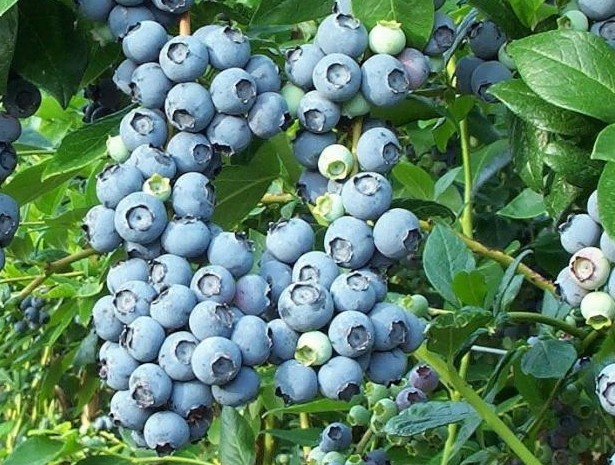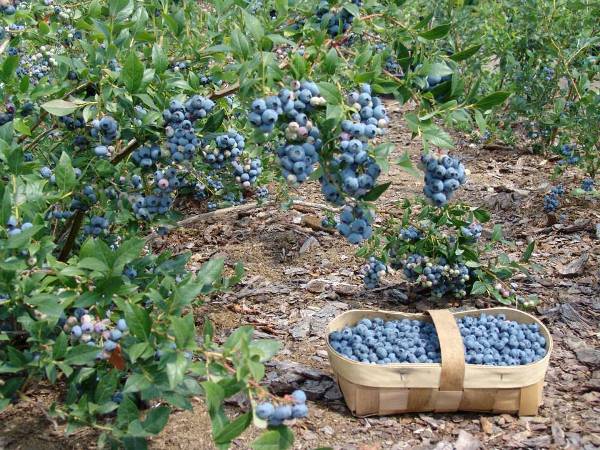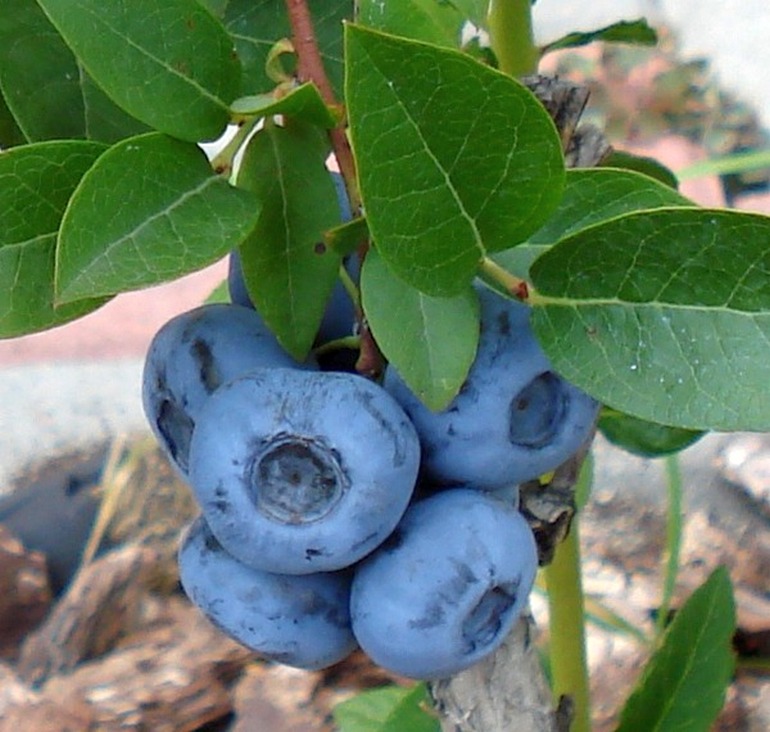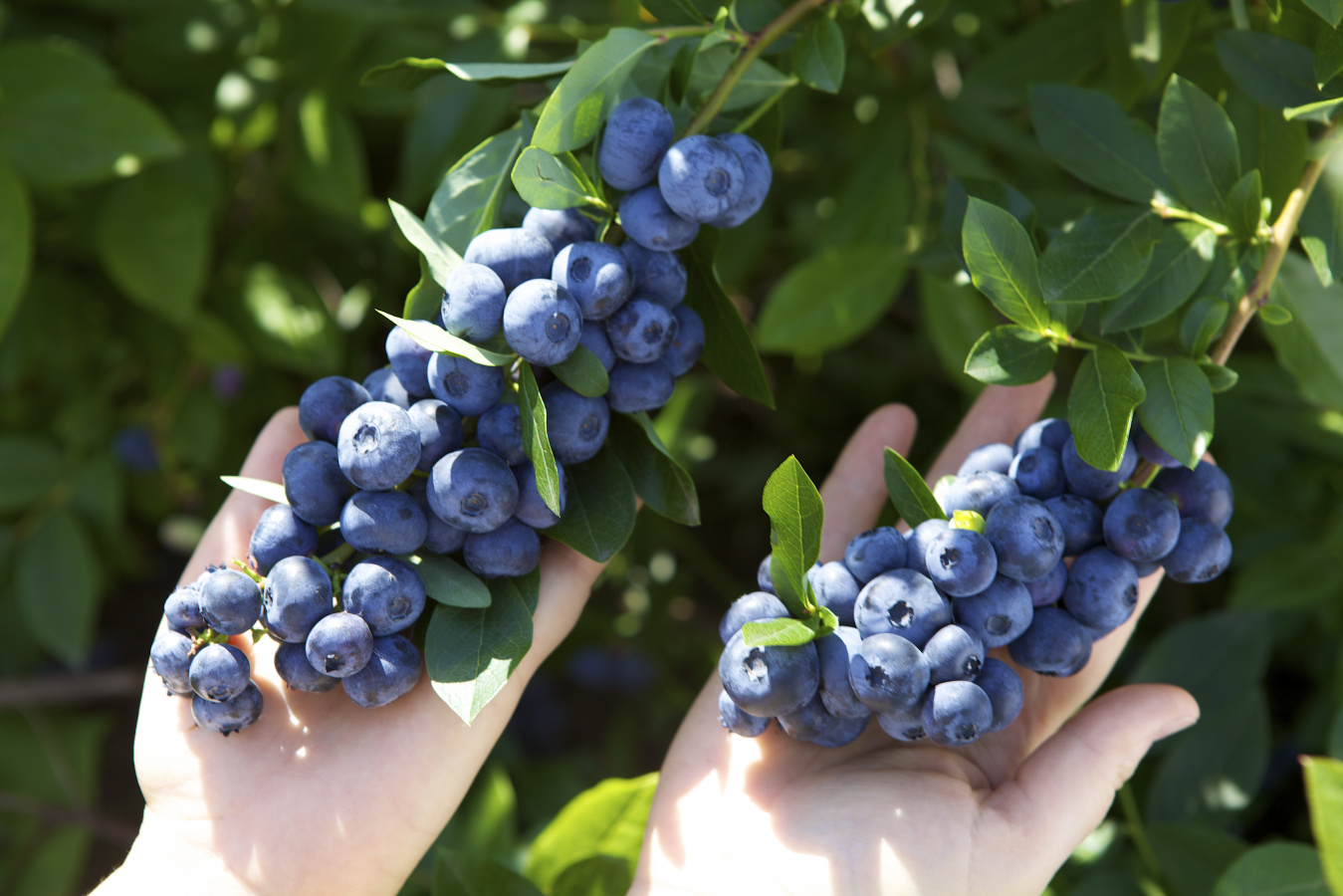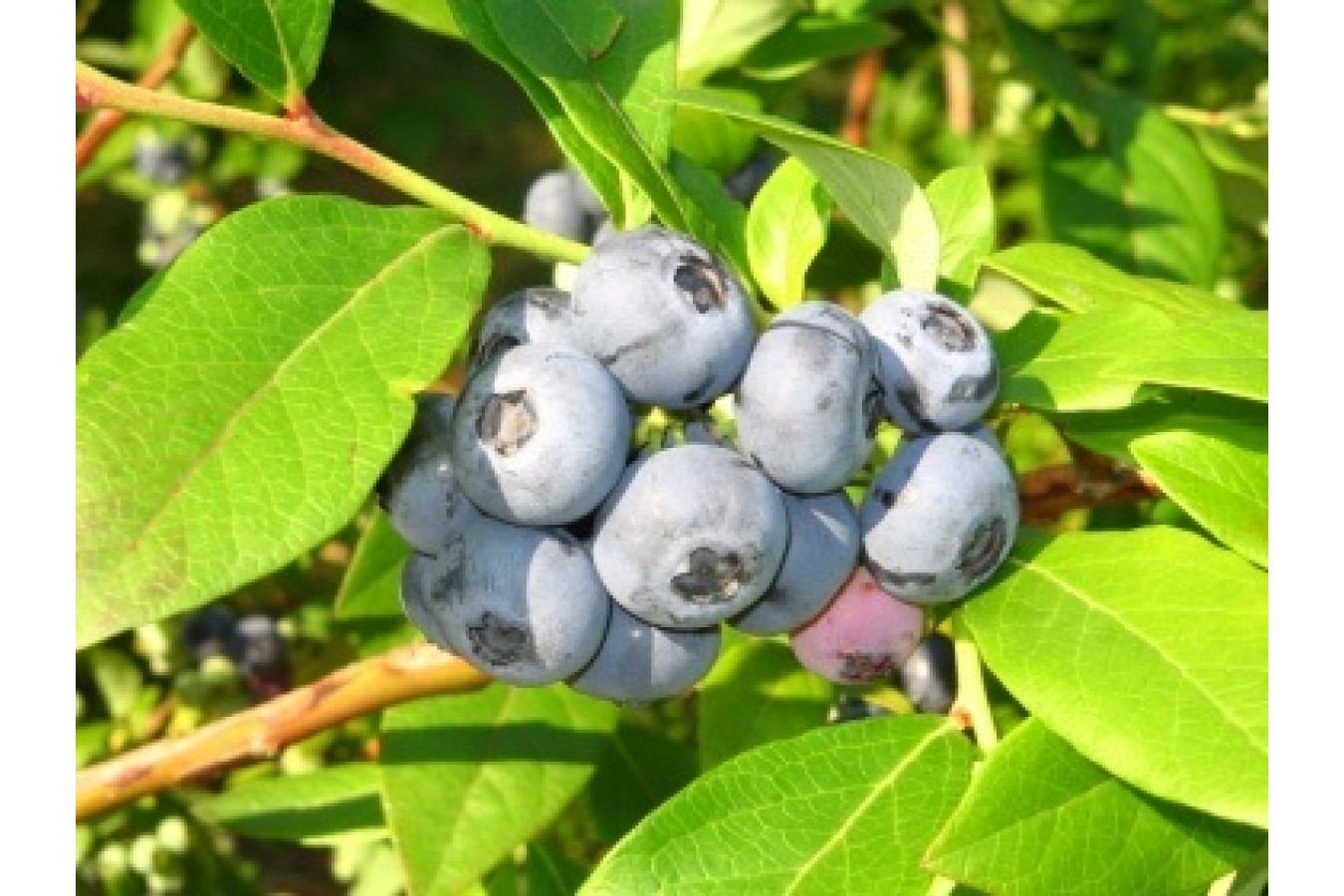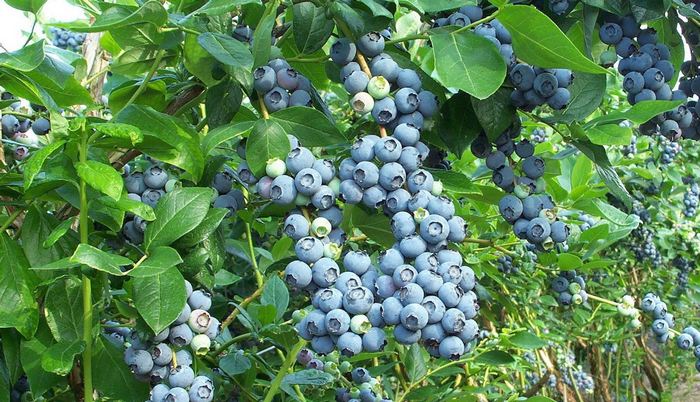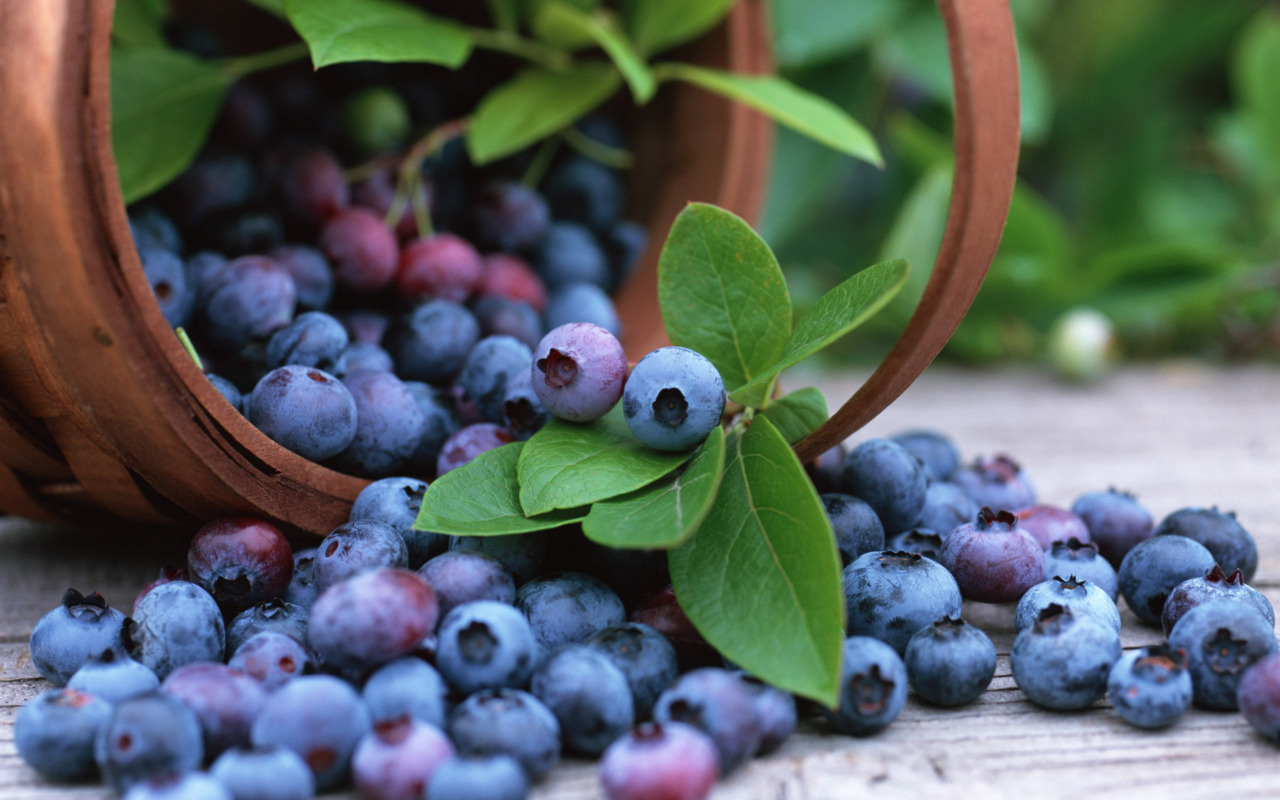Content:
Blueberry Northland (Northland) in translation from English means "North country". This variety got its name for a reason, because it was bred by American breeders specifically for regions with characteristic severe winters and frosts down to -40 ˚С. For the first time this variety was announced in 1967. Hardiness and high yields contributed to the rapid spread of Northland in the northern countries. Today it ranks in the top of the best frost-resistant varieties, along with such varieties as Chauntecleer blueberries and Berkeley blueberries.
Description of the variety
The Northland blueberry is a tall variety, on average it reaches a height of 1 m 20 cm. The crop ripens early - in the second decade of June. The fruits are large (about 2 g), have a sweet taste and a pronounced aroma, and have a delicate skin. The average yield is 5 kg from one bush, in good growing conditions - up to 8 kg from one bush. The berries are highly preserved and are often used in cooking for canning and making jams.
This is a collective plant, therefore it is recommended to grow it in plantations, and not alone, since this variety needs a pollinator during flowering. The bushes have a developed crown and a powerful trunk. The decorative appearance allows the use of shrubs to decorate the garden. Landscape designers often use them to create alpine slides and hedges, combining them with coniferous shrubs and trees. Plants easily tolerate frost, but not drought tolerant.
Nordland blueberries, which love well-lit areas, yield several times lower in the shade. Drafts and strong winds also negatively affect the characteristics of the plant. The description of the Northland blueberry variety almost completely coincides with the description of such berries as Chauntecleer blueberries, which are known for their versatility and unpretentiousness. Both of these varieties are ideal for planting in the northern regions of Russia. They perfectly tolerate severe winters, and in summer they give a bountiful harvest, which is distinguished by excellent taste.
Landing
Planting work can be done both in summer and in autumn, but early spring is considered the best time, since the bushes have time to gain strength during the summer period, and winter will not be a test for them. For planting, it is best to choose a biennial plant, up to half a meter high, with closed roots. Outwardly, the bush should look neat, the leaves are intact, not drooping. A healthy blueberry seedling is the key to successful blueberry cultivation.
The planting holes should be located at a distance of 1.5 m from each other, their depth should be 0.65 m. At the bottom of the hole, a drainage layer of sand and gravel mixture should be laid and the soil should be backfilled. The seedling must be carefully removed and the pot, so as not to damage the roots, then it must be placed in the center of the hole, and the roots are evenly distributed around the trunk. Now the roots can be covered with soil, so that the root collar is level with the ground, but a slight deepening is also allowed, up to 2 cm. From above, the seat must be covered with peat.
Cultivation rules of the variety
Caring for this variety of blueberries is quite traditional; it needs to provide watering, loosening the soil, removing weeds and feeding.Varietal blueberries are usually not picky, but compliance with growing standards is necessary for the shrub to show good yields.
- There are no special requirements for loosening the soil. It is enough to carry it out on a regular basis, without going deeper than 10 cm, otherwise there is a risk of damaging the roots. Particular attention should be paid only to watering and maintaining the optimum acidity of the soil at the level of 3.5-4 Ph. Due to insufficient watering, blueberries become very shallow and become sour. Normal watering for blueberries is 10 liters of water under 1 bush with a frequency of 1 time per week, dividing this volume into morning and evening. At the time of the formation of the berries, you need to water the bush 2 times more often, thanks to this, the fruits will gain maximum shape and juiciness. Do not increase the volume and frequency of watering, as this leads to root rot. In dry summers, the plant responds well to foliage irrigation in the evening;
- Nordland is not picky about fertility and shows good yields even on depleted soils. However, to obtain the maximum possible yield, additional feeding is necessary.
You can determine the need for this or that fertilizer by the appearance of the plant:
- Yellow foliage and stunted growth - nitrogen deficiency;
- Reddening of the leaves - lack of phosphorus;
- The dying off of young twigs is a lack of potassium.
All fertilizers are applied according to the dosages indicated on the packages.
- The formation of a bush is an important stage that includes pruning and tying branches. The crown of Nordland blueberries often grows strongly and becomes very spreading. To give a more compact form, gardeners have resorted to a garter of branches, although this procedure is not necessary. But pruning for blueberries is very important. In the spring, for sanitary purposes, it is necessary to remove dead and diseased branches, as well as those that broke off under the weight of snow and bent to the ground. The blueberry crown develops very slowly and does not need formative pruning. In order to increase yields, you can remove shoots that are more than 7 years old, and in order to get larger berries, you can prune five-year-old branches, but you should not get carried away - the tree grows shoots very slowly.
Diseases and pests
Blueberries are susceptible to various fungal diseases: gray rot, white and double spot, physalosporosis, stem cancer, moniliosis. They affect different parts of plants.:
- Spots on branches that lead to their death;
- The defeat of the leaves, as a result of which they fall off, and the bush becomes bare;
- Fruit infestation leads to the complete destruction of the crop.
Fungal lesions cannot be cured. It is necessary to remove and dispose of all parts of the plants that have the fungus. It is safer to burn diseased branches, this minimizes the risk of re-infection. After that, the remaining healthy branches must be treated with fungicides, for example, Topsin. As a preventive measure, it is recommended to treat the bushes with Bordeaux mixture in spring and autumn. Also, an effective preventive measure is cleaning the area from fallen leaves, since most fungi overwinter there.
Harmful insects for blueberries:
- Aphids - deprives the plant of nutrients and is a carrier of viral diseases;
- Pine silkworm - eats leaves;
- Earwig - gnaws through any parts of the plant, leaving holes through;
- Scabbard - sucks the juice from the leaves, gradually the leaves dry out and fall off. Scale colonies can completely destroy shrubs.
In general, insects rarely settle on blueberries, and you can deal with them manually. You can add a ladybug to a bush - this is a natural enemy of aphids and silkworms. If the bush is severely damaged, it is worth resorting to more serious measures, such as insecticide treatment. Processing must be carried out before flowering and after harvesting, otherwise the berries cannot be eaten.
Birds can severely destroy blueberry crops. It is not difficult to cope with them, it is enough to wrap the bushes with a transparent thin net. The rustling scares away birds, so a film is hung on the branches, which will create noise.
Advantages and disadvantages
| Benefits | disadvantages |
|---|---|
| Frost resistance | A diseased bush sometimes has to be completely destroyed |
| Unpretentiousness | Slow bush growth |
| High yield | Sensitive to shade and draft |
| Aesthetic look | Difficulty in establishing an optimal irrigation regime |
| High preservation of berries, good taste |
Nordland blueberries are worthy of the attention of gardeners. Care and attention are generously rewarded with a tasty and healthy harvest.
